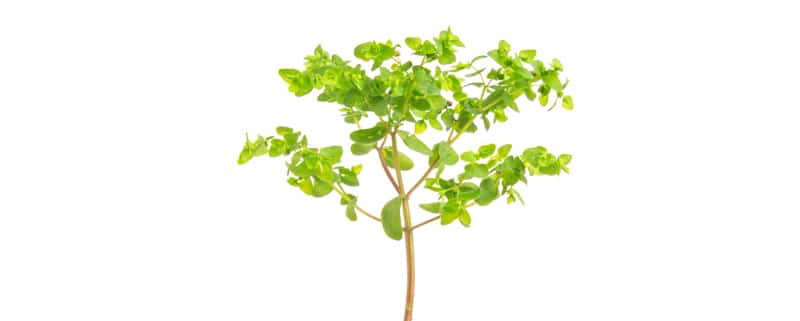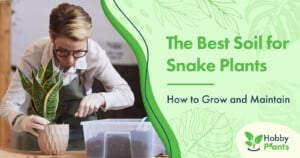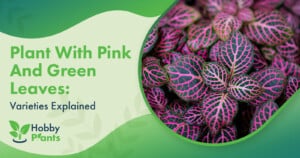The money tree illustrates ideas of immense wealth. Whether or not the legend surrounding the money tree is true, it is unquestionable that people associate it with luck and fortune. These plants, also referred to as Pachira Aquatica, are easy to cultivate indoors. They are popular due to their beautiful braided stems, enticing palm-shaped leaves, and amusing silhouettes resembling umbrellas.
Loamy, rich soil with high water drainage is ideal for money trees. They can thrive in soil from alkaline to acidic but prefer a neutral pH of 6 to 7.5. They thrive in soil enriched with vermiculite or perlite, coarse, rough sand, peat moss, and compost.
Growing them is simple, but money plants require an adequate cultivating environment to thrive, such as the right choice of potting soil.

Choose Suitable Soil For A Money Plant
Soil is directly related to a plant’s wellness and health because suitable soil contains everything your plant demands to thrive. This includes nutrients, humidity and moisture, pest control, and creating an environment suitable for supporting the roots, oxygenation, gas exchange, and aeration. Money trees require proper drainage and quality soil to grow. Only when soil is healthy and nutritious, the root systems can transfer vital nutrients to the plant’s branches and other structures.
If you choose inadequate soil, the plant’s health will suffer, resulting in problems such as being prone to diseases. Money trees, like every indoor plant, are vulnerable to illnesses. They are susceptible to root rot, can become ill from waterlogging and underwatering, and can even freeze in cooler conditions. In these cases, soil and fertilizer are both needed to assist in the restoration of the plant’s health.
Money tree, in general, favors a well-aerated soil with high drainage capabilities that allows for adequate drainage while also holding sufficient moisture and hydration for the plant. A peat-based soil with one part perlite, one part peat, one part coarse, rough sand, and a good handful of compost is a great starting point.
Consequences Of Choosing The Wrong Soil
If you use inadequate soil for your money plant, it will have trouble growing and will show signs. If your money tree develops a discolored, soft or mushy stem or its younger leaves become yellow or have a brownish tint, it could indicate a rotting root and excessive moisture in the soil.
If one’s money tree has slow growth or is not creating as many lush and vibrant leaves as you might expect, it could be due to an imbalance in the pH of your soil. Money trees can grow in alkaline and acidic soils but tend not to flourish as well as in neutral pH potting soil.
Falling leaves are also a huge indicator that you are using the wrong soil for your money plant.
Best Soil For Money Tree:
Birchseed Soils Money Tree Blend:
The Birchseed Soils money tree blend is well-aerated, grippy, and made up of some of the finest, highest-quality horticultural components available. It has the proper proportions of sand, perlite, peat moss, lime, and worm casting to provide your tree with the best possible growing environment. This mixture can quickly improve the low-quality soil that you purchased from a store.
This mixture is ideal for newly planted money tree seeds as well as mature plants that are in the later phases of growth. Additionally, money trees suffering from problems like root rot and excessive watering benefit significantly from the peat moss mixture. It contains enough for more than two medium-sized money plants and comes in a resealable package.
Bonsai Soil Fast Draining Pre-Blend:
This pre-blend mixture, which is another excellent fast-draining soil blend and has already been sifted before being bagged, is ready to use. For your money tree plant and any other bonsai plants you could have, it is the ideal mixture. Succulents can also be grown in it.
It is well known that nurseries all over the world utilize this professional-grade soil to help money tree plants achieve a balanced pH, excellent storage, and good water retention.
Additionally, it improves soil aeration and nutrient uptake. In other words, if you’re seeking the ideal soil combination to aid in your tree’s recovery from fungal or root problems, this is it. The pouch is composed entirely of recyclable materials, and the food inside is of the highest caliber. Additionally, the blend is backed by a 100% money-back guarantee.
Bonsai Soil by Perfect Plants:
The bonsai trees and shrubs, which include money trees, make this soil by Perfect Plants an excellent choice. It is a multipurpose mixture that may provide your money tree with all of the crucial nutrients it needs to maintain the most excellent soil quality. It is made of natural materials and aids in soil moisture retention to prevent the roots from drying out.
This combination offers the ideal balance to both nourish the roots with nutrients and safeguard them against bacterial infections and frequent fungal illnesses like root rot. This mixture not only contains a good amount of vitamins and minerals, but it can also be used with other soil mixtures to give your plant the best nourishment possible.
Superfly Bonsai:
Another excellent option for your bonsai plant is this potting soil from Superficial Bonsai. A combination of pumice, black lava, akadama, and charcoal are included. The ingredients are all supplied from American suppliers.
This potting mix is one of the finest draining mixes now on the market and is used by hundreds of bonsai specialists around the world. This mixture lacks mulch and bark, making it non-organic. It truly is a substrate mixture. This potting mix can be used to assist your money tree plant recovery if it has drainage problems or if it is afflicted with root rot or other fungal infections.
Tinyroots Bonsai Soil:
This premium Tinyroots blend combines akadama, red lava rock, and pumice. That is a double compost that is 100 percent organic and comprises vermiculite and calcined clay.
Look no further if you’re seeking a professional-grade soil mixture. It is ideal for bonsai plants and gives them the nutrients they need for average growth. This party mix is packed, dried, and double-sifted for your convenience. It also comes in a variety of sizes and is packaged in a resealable packet for rapid use.

Should You Plant The Money Tree Directly Into The Ground?
Many gardeners suggest against growing money plants in the ground because their roots can get invasive, particularly if planted close to your home. Money plants can grow quite large and begin producing nuts within a few months, leaving your yard littered if you leave it unsupervised.
Furthermore, once formed, these trees can be difficult to eradicate, making them a nuisance. Growing your money plant in a pot allows you to control root growth and keep it from getting invasive.
If you plan on growing a money tree outside, there are certain factors you should keep in mind. Money trees can only grow outside if they are exposed to temperature and natural light requirements suitable for their native growth environment. This implies that they will need warm temperatures and moderate to high humidity along with the right mixture of soil.
Conclusion
We hope that this article has given you enough options for potting soil for a money tree plant. Remember that a money tree’s health depends on its soil’s health; thus, it is essential to keep the soil moist and well-aerated.
Victoria is the owner and main author of hobby plants. She loves spending her free time in her garden planting and taking care of her plants. Victoria hopes you enjoy the content here!
![How Do You Propagate a Money Tree? [COMPLETE GUIDE] How Do You Propagate a Money Tree? [COMPLETE GUIDE]](https://www.hobbyplants.com/wp-content/uploads/2022/06/how-to-propagate-money-tree-300x158.jpg)

![How To Get Rid Of White Bugs In Soil? [PLAN OF ACTION] How To Get Rid Of White Bugs In Soil? [PLAN OF ACTION]](https://www.hobbyplants.com/wp-content/uploads/2022/08/white-bugs-in-soil-300x158.jpg)
![Prayer Plant At Night: What Makes Them Unique? [EXPLAINED] Prayer Plant At Night: What Makes Them Unique? [EXPLAINED]](https://www.hobbyplants.com/wp-content/uploads/2022/07/prayer-plant-at-night-300x158.jpg)
![Why Are My Peace Lily Leaves Turning Brown? [EXPLAINED] Why Are My Peace Lily Leaves Turning Brown? [EXPLAINED]](https://www.hobbyplants.com/wp-content/uploads/2022/07/peace-lily-leaves-turning-brown-1-300x158.jpg)
![Why Does My Majesty Palm Have Brown Tips? [EXPLAINED] Why Does My Majesty Palm Have Brown Tips? [EXPLAINED]](https://www.hobbyplants.com/wp-content/uploads/2022/08/majesty-palm-brown-tips-300x158.jpg)

![The Types of Prayer Plants: [Varieties Explained] The Types of Prayer Plants: [Varieties Explained]](https://www.hobbyplants.com/wp-content/uploads/2022/09/types-of-prayer-plants-300x158.jpg)
![The Types of Ice Plants: [Varieties Explained] The Types of Ice Plants: [Varieties Explained]](https://www.hobbyplants.com/wp-content/uploads/2022/09/types-of-ice-plant-300x158.jpg)
![What Causes Brown Tips on A Ponytail Palm? [EXPLAINED] What Causes Brown Tips on A Ponytail Palm? [EXPLAINED]](https://www.hobbyplants.com/wp-content/uploads/2022/08/brown-tips-on-ponytail-palm-300x158.jpg)
![What Are Ground Cover Plants? [Varieties Explained] What Are Ground Cover Plants? [Varieties Explained]](https://www.hobbyplants.com/wp-content/uploads/2022/08/ground-cover-plants-300x158.jpg)
![How to Propagate Fiddle Leaf Fig [BEST METHODS] How to Propagate Fiddle Leaf Fig [BEST METHODS]](https://www.hobbyplants.com/wp-content/uploads/2022/06/how-to-propagate-fiddle-leaf-fig-300x158.jpg)